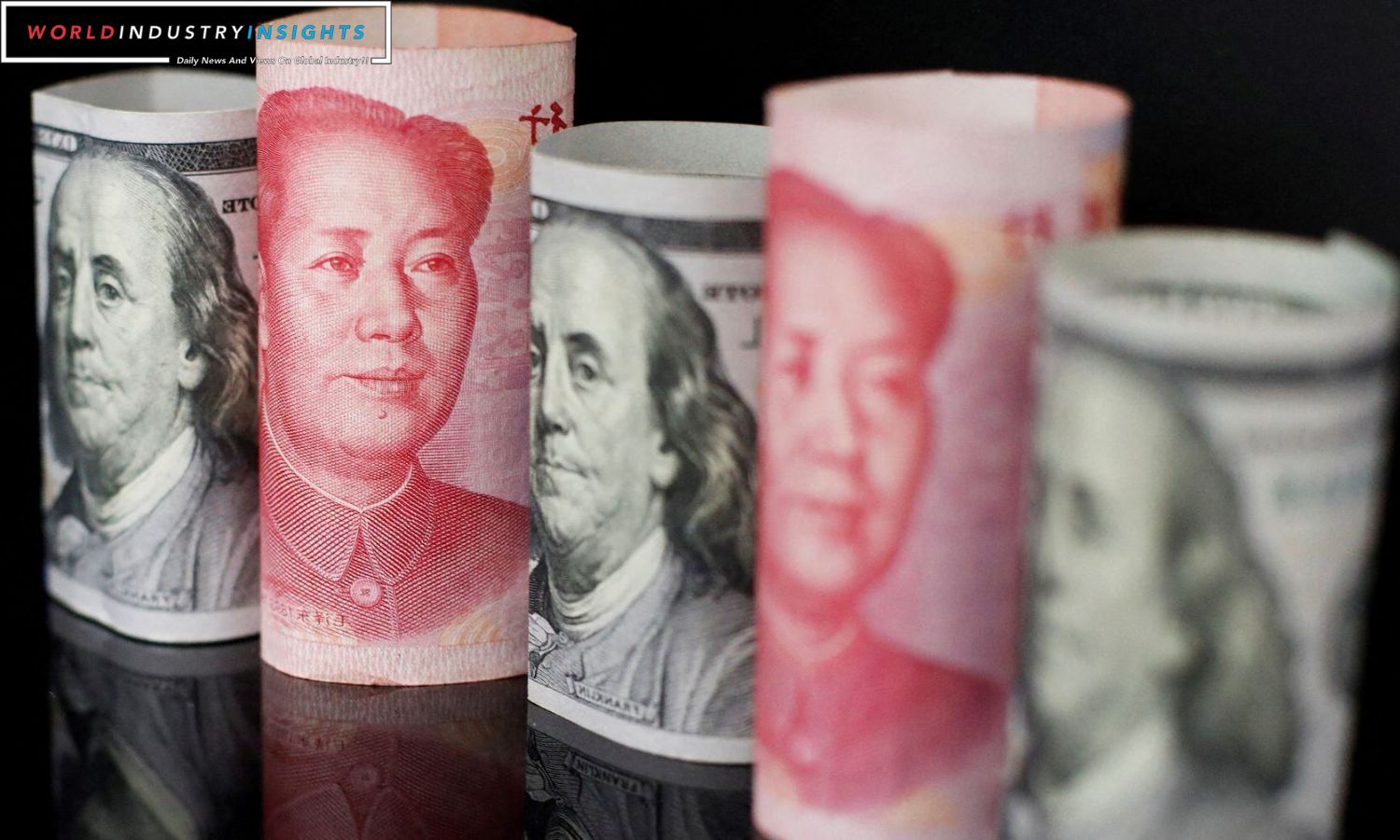Dollar Dips to 2-Month Low: The US dollar’s downward trend persisted, reaching a two-month low, as traders solidified their belief that the era of US rate hikes has concluded. Instead, attention turned to speculation about when the Federal Reserve might initiate rate cuts. The yuan experienced gains, achieving three-month highs in both onshore and offshore markets, supported by interventions from China’s central bank. Concurrently, the Australian dollar also reached a three-month peak against the weakening greenback.
The dollar index in Asian trade dipped to 103.64, its lowest level since September 1, extending its nearly 2% decline from the previous week, marking the sharpest weekly fall since July. This movement in the currency markets was largely influenced by market participants reassessing the likelihood of further rate hikes by the Federal Reserve, following a series of weaker-than-expected US economic indicators. Particularly noteworthy was an inflation reading that fell below estimates.
With the potential for rate hikes priced out, market attention now turns to when the first rate cuts could materialize. Futures are indicating a 30% chance that the Federal Reserve might begin lowering rates as early as March, according to the CME FedWatch tool. This shift in sentiment prompted Carol Kong, a currency strategist at Commonwealth Bank of Australia (CBA), to comment, “Market pricing for FOMC policy is likely to remain pretty steady, so the dollar should have very few catalysts to move it around this week.” Kong added that if risk appetite improves, the dollar could weaken further.
Amid the weaker dollar, the euro rose to an over two-month high of $1.0924, with the upcoming flash PMI readings in the euro zone eagerly anticipated later in the week. Sterling also gained, reaching $1.2475.
Also Read: Dollar Holds Steady, Aussie Dips: RBAs Rate Hike Decision Sparks Market Uncertainty
Scheduled for release this week are the minutes of the Federal Reserve’s latest meeting, providing insights into policymakers’ thinking as they maintained rates for the second consecutive time earlier this month. Vishnu Varathan, Head of Economics and Strategy at Mizuho Bank, sees the FOMC minutes possibly framing a “Fed pivot,” favoring risk-on rallies with softer US Treasury yields and a weaker US dollar.
The decline in the greenback provided some relief for the Japanese yen, strengthening to the stronger side of 150 per dollar and gaining 0.4% to 149 per dollar. The Australian dollar, a currency sensitive to risk, edged approximately 0.5% higher to $0.6546, reaching its strongest level since August. Simultaneously, the New Zealand dollar rose 0.52% to $0.60235.
In the Asian markets, China opted to keep its benchmark lending rates unchanged at the monthly fixing, aligning with expectations. The weaker yuan and a cautious approach to further monetary easing, as policymakers assess the impact of previous stimulus on credit demand, contributed to this decision. The yuan received some support as the central bank set its midpoint at the strongest level since August.
The onshore yuan rose by 0.5% to an over three-month high of 7.1753 per dollar, and the offshore yuan similarly gained momentum, jumping roughly 0.6% to an over three-month high of 7.1745 per dollar. Despite these recent gains, the yuan, which has experienced a nearly 4% decline against the dollar this year in the onshore market, remains under pressure. Lingering concerns about a sluggish economic recovery in China contribute to the fragile sentiment surrounding the yuan, as noted by Carol Kong of CBA, who mentioned, “I think the theme of a soft Chinese economic recovery will persist for a while.”
Our Reader’s Queries
Why is the dollar weakening?
When rates fall, it’s usually not good news for the dollar. This is because investors seeking higher yields may find assets in other currencies more appealing. While experts predicted a weaker dollar in the coming year, a quicker rate cut could speed up its decline.
Why did dollar index fall?
The US dollar has taken a hit following the recent announcement by the US Fed of a dovish rate pause. This has come as a surprise to the markets, with the Fed signaling 75 basis points rate cuts for 2024. As a result, the dollar index has fallen below 102 and is expected to lose around 2% this week. The prospect of interest rate cuts from the Fed next year is putting pressure on the dollar.
What is the best investment when the dollar falls?
To make the most of the declining U.S. dollar, consider investing in U.S. exporters, tangible assets like real estate or commodities, and appreciating currencies or stock markets. These options offer a solid foundation for generating profits.
When the dollar drops in value?
When the value of the U.S. dollar decreases compared to another currency, it’s known as currency depreciation. This can happen when the Federal Reserve implements an easy monetary policy, causing investors to look for higher returns outside of the U.S. This can lead to a weakening of the dollar as investment capital flows out of the country.


